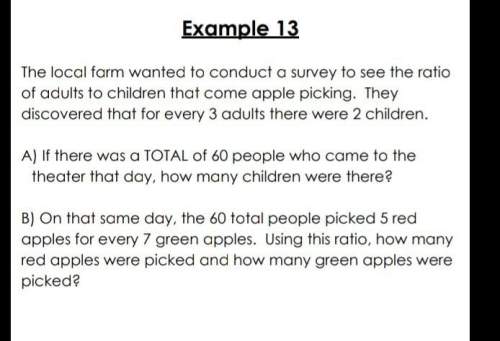
Mathematics, 15.07.2019 13:30 abby1919
Which of the following is not a congruence transformation? a. translating b. rotating c. stretching

Answers: 1


Another question on Mathematics

Mathematics, 21.06.2019 16:10
To find the extreme values of a function f(x.y) on a curve x-x(t), y y(t), treat f as a function of the single variable t and use the chain rule to find where df/dt is zero. in any other single-variable case, the extreme values of f are then found among the values at the critical points (points where df/dt is zero or fails to exist), and endpoints of the parameter domain. find the absolute maximum and minimum values of the following function on the given curves. use the parametric equations x=2cos t, y 2 sin t functions: curves: i) the semicircle x4,y20 i) the quarter circle x2+y-4, x20, y20 b, g(x,y)=xy
Answers: 2

Mathematics, 21.06.2019 21:50
Which rule describes the composition of transformations that maps ajkl to aj"k"l"? ro. 900 o to, -2(x, y) to, -20 ro, 900(x, y) ro, 9000 t-2. o(x,y) t-2, 00 ro, 900(x, y)
Answers: 2


Mathematics, 21.06.2019 23:30
Which rule describes the composition of transformations that maps △abc to △a”b”c
Answers: 2
You know the right answer?
Which of the following is not a congruence transformation? a. translating b. rotating c. stretching...
Questions


Chemistry, 17.07.2019 15:50


Mathematics, 17.07.2019 15:50

Chemistry, 17.07.2019 15:50

History, 17.07.2019 15:50

English, 17.07.2019 15:50

Mathematics, 17.07.2019 15:50

Physics, 17.07.2019 15:50

Mathematics, 17.07.2019 15:50



History, 17.07.2019 15:50

Mathematics, 17.07.2019 16:00

Social Studies, 17.07.2019 16:00

English, 17.07.2019 16:00

Mathematics, 17.07.2019 16:00


Mathematics, 17.07.2019 16:00




